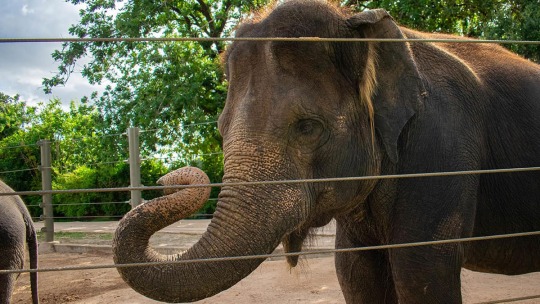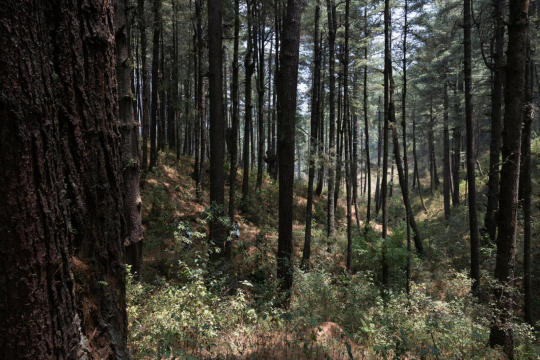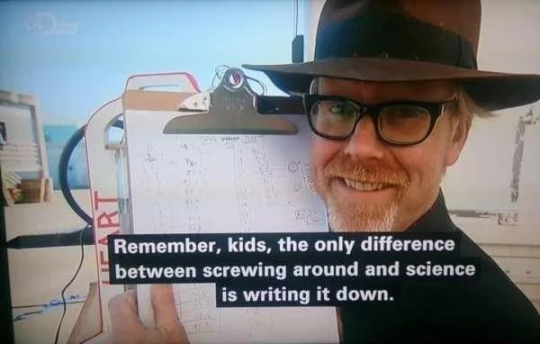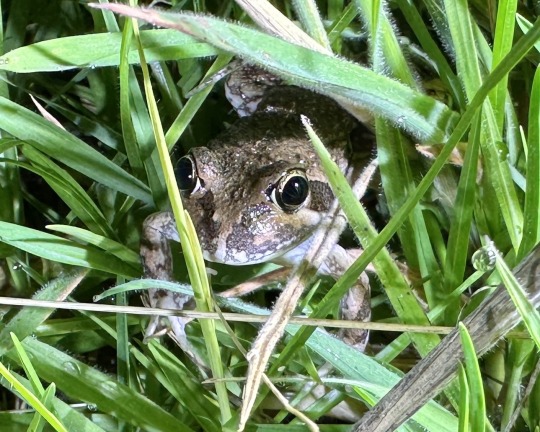#Citizen science
Text
If you're feeling anxious or depressed about the climate and want to do something to help right now, from your bed, for free...
Start helping with citizen science projects
What's a citizen science project? Basically, it's crowdsourced science. In this case, crowdsourced climate science, that you can help with!
You don't need qualifications or any training besides the slideshow at the start of a project. There are a lot of things that humans can do way better than machines can, even with only minimal training, that are vital to science - especially digitizing records and building searchable databases
Like labeling trees in aerial photos so that scientists have better datasets to use for restoration.
Or counting cells in fossilized plants to track the impacts of climate change.
Or digitizing old atmospheric data to help scientists track the warming effects of El Niño.
Or counting penguins to help scientists better protect them.
Those are all on one of the most prominent citizen science platforms, called Zooniverse, but there are a ton of others, too.
Oh, and btw, you don't have to worry about messing up, because several people see each image. Studies show that if you pool the opinions of however many regular people (different by field), it matches the accuracy rate of a trained scientist in the field.
--
I spent a lot of time doing this when I was really badly injured and housebound, and it was so good for me to be able to HELP and DO SOMETHING, even when I was in too much pain to leave my bed. So if you are chronically ill/disabled/for whatever reason can't participate or volunteer for things in person, I highly highly recommend.
Next time you wish you could do something - anything - to help
Remember that actually, you can. And help with some science.
#honestly I've been meaning to make a big fancy thorough post about this for literally over a year now#finally just accepted that's not going to happen#so have this!#there's also a ton of projects in other fields as well btw#including humanities#and participating can be a great way to get experience/build your resume esp if you want to go into the sciences#actual data handling! yay#science#citizen science#climate change#climate crisis#climate action#environment#climate solutions#meterology#global warming#biology#ecology#plants#hope#volunteer#volunteering#disability#actually disabled#data science#archives#digital archives#digitization#ways to help#hopepunk
7K notes
·
View notes
Text
It’s a little bit more of a bummer than most citizen science projects, but I wanted to give a shoutout to dBird, where you can report dead or injured birds throughout the USA to provide data for NYC Audubon. We might not all have time for a daily eBird checklist, but hopefully you don’t come across as many dead birds - if you do, the whole process took me under a minute to report a sighting. There’s less than 2000 birds reported for 2024 as of this post (which isn’t a lot, given how many birds die annually), so if and when you sadly find a dead bird, think of dBird’s conservation efforts and send in your report!
1K notes
·
View notes
Text
Good News - July 15-21
Like these weekly compilations? Tip me at $kaybarr1735! (Or check out my new(ly repurposed) Patreon!)
1. Thai tiger numbers swell as prey populations stabilize in western forests

“The tiger population density in a series of protected areas in western Thailand has more than doubled over the past two decades, according to new survey data. […] The most recent year of surveys, which concluded in November 2023, photographed 94 individual tigers, up from 75 individuals in the previous year, and from fewer than 40 in 2007. […] A total of 291 individual tigers older than 1 year were recorded, as well as 67 cubs younger than 1 year.”
2. Work starts to rewild former cattle farm

“Ecologists have started work to turn a former livestock farm into a nature reserve [… which] will become a "mosaic of habitats" for insects, birds and mammals. [… R]ewilding farmland could benefit food security locally by encouraging pollinators, improving soil health and soaking up flood water. [… “N]ature restoration doesn't preclude food production. We want to address [food security] by using nature-based solutions."”
3. Harnessing ‘invisible forests in plain view’ to reforest the world

“[… T]he degraded land contained numerous such stumps with intact root systems capable of regenerating themselves, plus millions of tree seeds hidden in the soil, which farmers could simply encourage to grow and reforest the landscape[….] Today, the technique of letting trees resprout and protecting their growth from livestock and wildlife [… has] massive potential to help tackle biodiversity loss and food insecurity through resilient agroforestry systems. [… The UN’s] reported solution includes investing in land restoration, “nature-positive” food production, and rewilding, which could return between $7 and $30 for every dollar spent.”
4. California bars school districts from outing LGBTQ+ kids to their parents

“Gov. Gavin Newsom signed the SAFETY Act today – a bill that prohibits the forced outing of transgender and gay students, making California the first state to explicitly prohibit school districts from doing so. […] Matt Adams, a head of department at a West London state school, told PinkNews at the time: “Teachers and schools do not have all the information about every child’s home environment and instead of supporting a pupil to be themselves in school, we could be putting them at risk of harm.””
5. 85% of new electricity built in 2023 came from renewables

“Electricity supplied by renewables, like hydropower, solar, and wind, has increased gradually over the past few decades — but rapidly in recent years. [… C]lean energy now makes up around 43 percent of global electricity capacity. In terms of generation — the actual power produced by energy sources — renewables were responsible for 30 percent of electricity production last year. […] Along with the rise of renewable sources has come a slowdown in construction of non-renewable power plants as well as a move to decommission more fossil fuel facilities.”
6. Deadly cobra bites to "drastically reduce" as scientists discover new antivenom

“After successful human trials, the snake venom antidote could be rolled out relatively quickly to become a "cheap, safe and effective drug for treating cobra bites" and saving lives around the globe, say scientists. Scientists have found that a commonly used blood thinner known as heparin can be repurposed as an inexpensive antidote for cobra venom. […] Using CRISPR gene-editing technology […] they successfully repurposed heparin, proving that the common blood thinner can stop the necrosis caused by cobra bites.”
7. FruitFlow: a new citizen science initiative unlocks orchard secrets

“"FruitWatch" has significantly refined phenological models by integrating extensive citizen-sourced data, which spans a wider geographical area than traditional methods. These enhanced models offer growers precise, location-specific predictions, essential for optimizing agricultural planning and interventions. […] By improving the accuracy of phenological models, farmers can better align their operations with natural biological cycles, enhancing both yield and quality.”
8. July 4th Means Freedom for Humpback Whale Near Valdez, Alaska

“The NOAA Fisheries Alaska Marine Mammal Stranding Hotline received numerous reports late afternoon on July 3. A young humpback whale was entangled in the middle of the Port of Valdez[….] “The success of this mission was due to the support of the community, as they were the foundation of the effort,” said Moran. [… Members of the community] were able to fill the critical role of acting as first responders to a marine mammal emergency. “Calling in these reports is extremely valuable as it allows us to respond when safe and appropriate, and also helps us gain information on various threats affecting the animals,” said Lyman.”
9. Elephants Receive First of Its Kind Vaccine

“Elephant endotheliotropic herpesvirus is the leading cause of death for Asian elephants (Elephas maximus) born in facilities in North America and also causes calf deaths in the wild in Asia. A 40-year-old female received the new mRNA vaccine, which is expected to help the animal boost immunity[….]”
10. Conservation partners and Indigenous communities working together to restore forests in Guatemala

“The K’iche have successfully managed their natural resources for centuries using their traditional governing body and ancestral knowledge. As a result, Totonicapán is home to Guatemala’s largest remaining stand of conifer forest. […] EcoLogic has spearheaded a large-scale forest restoration project at Totonicapán, where 13 greenhouses now hold about 16,000 plants apiece, including native cypresses, pines, firs, and alders. […] The process begins each November when community members gather seeds. These seeds then go into planters that include upcycled coconut fibers and mycorrhizal fungi, which help kickstart fertilization. When the plantings reach about 12 inches, they’re ready for distribution.”
July 8-14 news here | (all credit for images and written material can be found at the source linked; I don’t claim credit for anything but curating.)
#hopepunk#good news#tiger#thailand#habitat#rewilding#food insecurity#forest#reforestation#california#lgbtq#lgbtqia#students#law#trans rights#gay rights#renewableenergy#clean energy#snake#medicine#crispr#citizen science#farming#whale#humpback whale#elephant#vaccine#alaska#guatemala#indigenous
414 notes
·
View notes
Text
Forget hot girl summer it is
Citizen Science Summer!
Get on eBird, iNaturalist, Seek, whatever apps and forums are cool to you and discover the huge variety of life right under your nose! Snap some pics and record those critters! Rejoice for native bees and plants growing wild by the roadside!!
#ecology#citizen science#ebird#inaturalist#seek#nature#biology#native plants#ecosystems#citizen science summer
2K notes
·
View notes
Text
Want to hunt for black holes, but lack access to a mountaintop observatory or deep-space telescope? There’s an app for that—and you can help out astronomers by using it.
Developed by the Dutch Black Hole Consortium, an interdisciplinary research project based in the Netherlands, Black Hole Finder is a free program available both on smartphones and as a desktop website. After reviewing a quick tutorial, all you need to do is study images taken by BlackGEM, a telescope array in Northern Chile tasked with searching the skies for cosmic events called kilonovas. Although launched in March 2024, as Space.com noted on August 19, the project’s recently expanded from just English and Dutch to support Spanish, German, Chinese, Bengali, Polish, and Italian.
Continue Reading.
179 notes
·
View notes
Text
Tonight we were lucky to meet this Very Fabulous Baby Pobblebonk Frog at the Frog Census in Reservoir!
332 notes
·
View notes
Text
From water-testing polluted rivers to measuring radiation levels, ordinary people are taking environmental research into their own hands.
#good news#environmentalism#science#citizen science#science is too important to be left to the scientists#environment#nature#water#clean water#water is life#conservation#environmental movement#direct action
380 notes
·
View notes
Text
Citizen Science and Contributing To Scientific Endeavor When You're Not "A Scientist"
Comments on some of my posts about science and misinformation express frustration with scientific establishments, and want to see more accessibility and attention given to amateurs participating in the scientific process and having their scientific voices heard.
If being involved in the creation of knowledge and discovery is something important to you, that's something I strongly encourage! It's absolutely possible. Amateur researchers with a passion and an eye for detail have made some fantastic discoveries - but what is often glossed over in stories like these are the years of work, the patient dedication, and the collaboration with university researchers that often underlie such discoveries.
The search for truth and information and the passion for science is present in a lot of people who aren't official "scientists" - curiosity is natural! And if participation in scientific observation, hypothesizing, experimentation, and discovering new things about the world is important to you, there are lots of ways to go about contributing - and the new year is a great time to start.
What are you interested in?
Ecology
Observing the world around you is for everybody. Getting invested in the environment of your hometown is for everybody. And, as the Mythbusters famously said,

Some ideas for a local ecology project:
Record the temperature outside every day at the same time - at sunrise, or noon, or sunset, or midnight. Depending on where you are, the local weather recording station may be miles away or on top of a mountain - measure the temperature yourself and compare it each day to what your app says. When is it accurate? When isn't it?
Record the weather every day. How much precipitation? What time of day? What kind?
Record what animals you see every day, where, when, and how many. Or choose a specific animal, like birds, or bees on flowers, or turtles or frogs in a local pond, or whiptail lizards vs. invasive house geckos, and record the numbers you see each day.
Record when in the year you see the first, or last, of a plant or animal. When the crocuses sprout, when the buds appear on the maple trees, when you see the first clover flowers or prickly pear flowers, when the first robin comes out or the first lizards come out of hibernation.
If you have an outdoor cat or a free-roaming dog, attach a GoPro or similar small camera to its collar to see where it goes and what it does.
Identify the plants growing in your neighborhood, and check in on it regularly to keep track of how each one fares in different weather conditions, or if any animals particularly like or don't like to eat it.
Bulk order some test strips, then take a small sample of soil from a local park or water from a local waterway each weekend and test them for PH, lead, chemicals, or whatever. See if it changes over the year, or after a heavy rainfall, or during drought.
Take a photo of the same spot every day for a year.
Linguistics
The study of how people use language! Everybody uses language in some capacity.
Do you have any small children near you? Talk to them! Record how they pronounce things and what they call new (or even familiar) concepts. Look for patterns.
Ask people you know if "dog" and "blog" rhyme, or if "Alohop" is a good pun for a pineapple beer. My family gets ENDLESS amounts of mileage out of this one with each other. Ask people you know questions about how they pronounce things, or what they call things. Make maps of dialectical differences between generations, neighborhoods, etc. Track linguistic shifts in the modern world.
History
Everyone and everywhere has a history, and accurate history is pressingly relevant always.
See if you have a local historical society, library archive, or history museum that is looking for volunteers to transcribe or translate collections.
Get elbow-deep in local archives. You likely have some sort of local archive near you that has not been fully digitized. Go in with a topic you want to learn about - Black families, Jewish communities, how your hometown transferred from Indigenous hands to settler ones, women who owned their own businesses, immigration, inter-racial relationships, sports, ice harvesting, farming practices, contemporary opinions on a major world history event that now seems so inevitable, sports and people's reactions to sports - and read everything in newspapers, wills, deeds, photographs, or other available records about your topic of choice. See if you can find connections that you haven't seen anyone else talking about.
These are just some things that occur to me immediately as something that anyone can do, if you're sufficiently interested in a question and want to discover more about it. The more local your topic, the less likely anyone has a solid answer to whatever you're wondering - and the more immediately relevant to the people around you your discoveries may be!
Combining it with a New Year's Resolution can also get you more motivated to do the things you want to do. Is your resolution to get more exercise? Take a brisk walk each morning and take a picture of the same area every day for a year. Take a walk every weekend down to the lake and count the turtles and frogs you see. Is your resolution to keep a daily diary For Real This Time? If nothing else, resolve to write down the weather and precipitation each day! Do you want to volunteer more or meet new people? Look for citizen science or local history groups! Feeling like you're working toward something Real is a great motivator.
Henry David Thoreau's detailed descriptions of the nature each day around Walden Pond in the 1840s provides a valuable benchmark for modern ecologists to compare environmental and climatic changes since then on a granular level. Silly rhyming poems and idiosyncratic spellings in letters and diaries help linguists track dialectical and pronunciation changes across time. Amateur science is great and valuable! We all can have a part in understanding and paying deeper attention to the world around us, if we want to.
#been sitting on this one for a while ever since I kept getting comments on my post about misinformation about how scientists are all#ivory tower eggheads who don't allow real normal people to Contribute to Science#Please contribute to science! I think everyone who wants to should!!!#science#citizen science
301 notes
·
View notes
Text
REBLOG FOR THE FLOWER
#polls#polling#tumblr polls#plants#flowers#science#botany#nature#environmentalism#fun#poll#beautiful#cursed#art#bees#biology#citizen science#science side of tumblr#lol#insects
183 notes
·
View notes
Link
“A young scientist who worked in the jungles of Thailand has been awarded a national prize for his invention of a $2 paper microscope that can be taken on field expeditions.
If a scientist wants to study something at the microscopic level, they need a microscope, which if they are deep in the Amazon Rainforest presents a serious problem.
Stanford University bioengineer Manu Prakash saw in his team’s $50,000 microscope a serious contradiction. As well as being bulky and ridiculously challenging to transport to remote locations, it needed training from skilled technicians to know how to use it. It also had to stay well out of the weather and other environmental impacts.
So he invented a portable one. Costing $1.75, the Foldscope has a 140x zoom, which is a small enough field to see a malaria parasite inside a cell...
“I want to bring science into everyone’s hands, make it more personal,” Prakash told CNN. “We have decoupled everyday life from the process of science.”
The ultimate in schoolhouse science, Prakash’s invention has sold 1.6 million units, mostly to schools in America, but serious scientists are also using it—like Dr. Kirti Nitnaware in India who works on the isolation and characterization of bioactive metabolites in cyanobacteria.
She used the Foldscope last year to isolate a new species of cyanobacteria. For this and other reasons, Prakash received the 2022 Golden Goose Award from the American Association for the Advancement of Science (AAAS), parent company of the scientific journal, Science.
“The Golden Goose Award reminds us that potential discoveries could be hidden in every corner and illustrates the benefits of investing in basic research to propel innovation,” said Sudip S. Parikh, chief executive officer at AAAS.” -via Good News Network, 9/20/22
#science#citizen science#thailand#stanford#microscope#science and technology#golden goose award#microbiology#malaria#good news#hope
6K notes
·
View notes
Text
East Coasters! Submit your Felt Reports:

81 notes
·
View notes
Text

something that I delight in (now that I regularly use inaturalist) is coming across flora and fauna that have no common names.
there's a thrill in discovering an overlooked or understudied organism. the world is so big and there is so much that we know so little about, even things that are in our backyard. you don't need to go somewhere exotic or to the bottom of the ocean to find creatures that are unfamiliar to the general public.
please say hello to Coccobaphes frontifer, spotted on a picnic table in Peoria, IL on 5/18/2024 :)
#bugs#bugblr#insects#insect#bug#entomology#oc#insecta#hemiptera#plant bug#true bugs#heteroptera#miridae#inaturalist#biodiversity#citizen scientist#citizen science
41 notes
·
View notes
Text
A friend of mine sent me this great quiz that's linked to a research project on how we perceive sounds compared to how various other animals hear them. I took it this morning and ended up aligning with frogs, so I guess I'll wear my "Honorary Amphibian" hat from Willapa NWR with extra pride.
Tag yourself with your result!
#animals#nature#study#research#citizen science#wildlife#quiz#fun#ecology#hearing#sound#music#birdsong#frogs#mammals#amphibians#the Music Lab
123 notes
·
View notes
Text
online citizen science projects are like coolmathgames for me
76 notes
·
View notes
Text




Tonight we also saw (and heard) A Lot of POBBLEBONKS! They were kind enough to stop by to say hello!
482 notes
·
View notes

